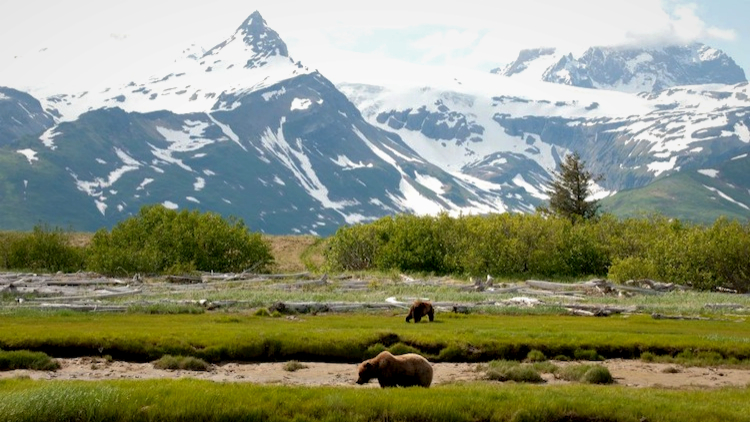Hyperphagia is the need to eat and eat and eat some more. This overactive need to pack on the pounds before winter drives brown bears to chase, dash, hop at, grab, and catch salmon wherever they can in July.
The frenzy to feed also compels most bears to leave the Brooks River in August to search for berries on the tundra or rivers with later salmon runs. Hyperphagia directs those same bears back in September to feast upon the remaining, slow moving, spawned out salmon or their floating carcasses. The salmon now are not as fat-rich or delicious as July salmon, but this unfortunate “beggars can’t be choosers” aspect of hyperphagia means survival to a bear.
We’re getting a front row seat to see hyperphagia’s effects on bears as they have started to return to Brooks Camp in the last few weeks. The same bears you have seen in July may look a lot different to you now. Those quick, lean, light-colored bears of early summer are now considerably colossal and much slower moving. These “September bears,” as Park Rangers call them, are generally darker in color as they have shed out the old coat and replaced it with the winter model. Bloated from gorging on salmon, many bears will bed down for long periods in a belly hole. A belly hole is basically a bear-sized crater that they have dug out so they can put their super-sized stomachs in and lay comfortably flush with the ground. Currently, the frequency of belly holes is increasing and so is the number of surprise encounters because the grass is not only tall but developing its autumnal brown hue, which can camouflage a snoozing 900 pound bear.
With respect to Brooks River’s bears and Katmai’s ever-changing landscape, we too must adapt. If visiting Brooks Camp in the fall, please bring your patience and a few extra layers. Bridge closures tend to be longer this time of year as we try to balance the continued survival of the world’s largest land carnivore with the needs of our visitors.
– Ranger Kara Lewandowski of Katmai National Park



